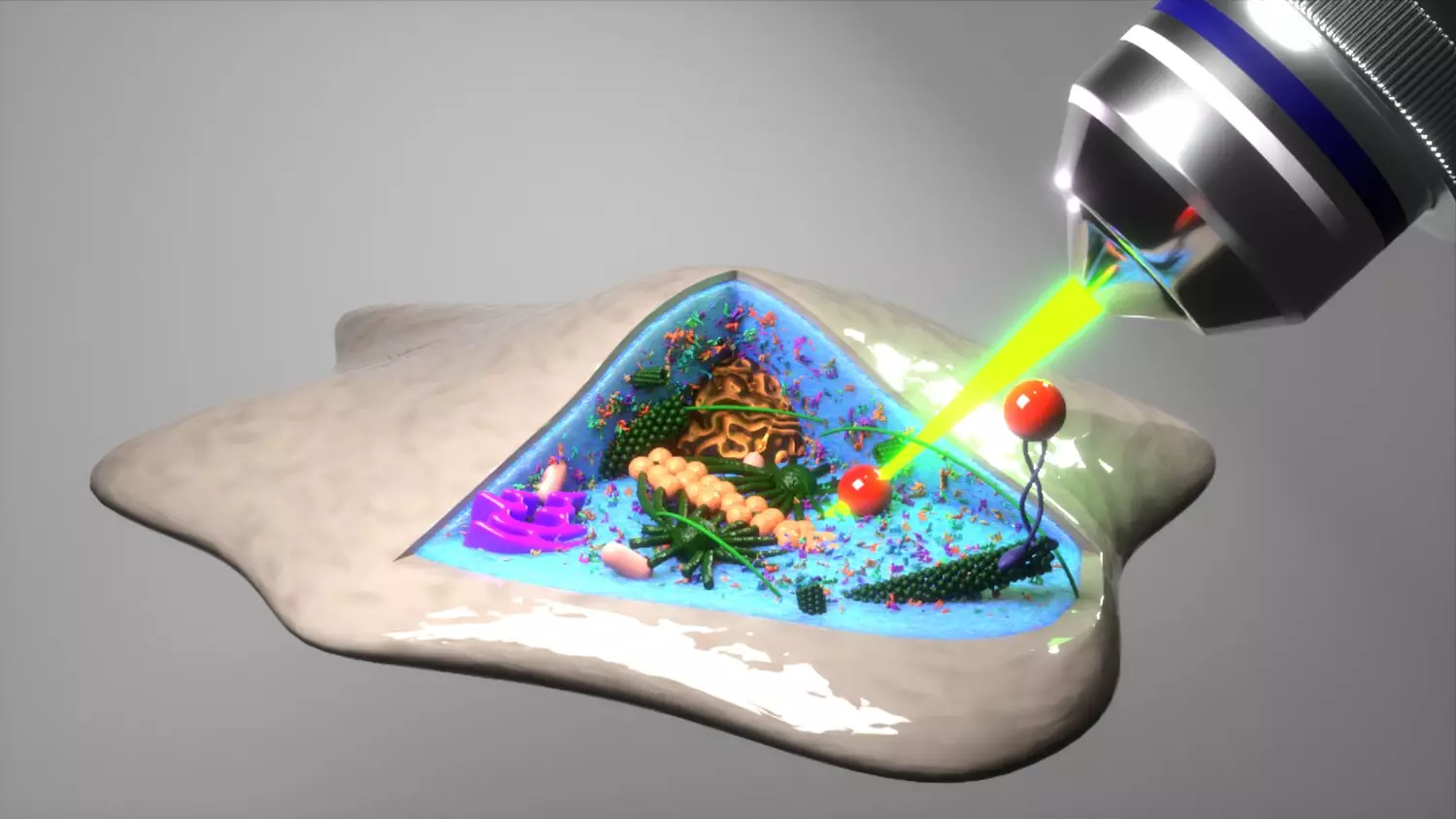Understanding the intricate world within cells has long captivated scientists, yet deciphering the mechanical properties of these fundamental units of life remains one of the most formidable challenges in biology. Despite a century of intensive research, the mechanical attributes of the cellular interior often elude traditional analysis techniques, which have been largely destructive. At the forefront of a promising breakthrough is a team from the University of Göttingen, armed with innovative methods that delve deeper into cell behavior without compromising their integrity.
Cells, the indispensable building blocks of all living organisms, house a plethora of mechanical properties that are crucial for their functionality and vitality. In a recent publication in *Nature Materials*, researchers unveil a groundbreaking approach, hinging on the seemingly chaotic motion of microscopic particles. By tapping into nature’s own random fluctuations, they crafted a detailed analysis that distinguishes between diverse mechanical behaviors within cells—an insight vital for advancing medical and biological research.
A Paradigm Shift in Cell Analysis
The Göttingen researchers pioneered a novel technique that relies on the inherent movement patterns of microscopic entities rather than destructive analytical methods. This step is monumental, as conventional approaches often reiterated the same limitations: damaging the cells being studied. The innovative method utilized optical laser traps, enabling the scientists to observe and manipulate these minute particles with extraordinary precision, down to the nanometer scale and with temporal granularity pinpointed to 50 microseconds.
Crucially, this technique incorporates the historical context of the particles’ movements, establishing a novel metric termed mean back relaxation (MBR). This new variable acts like a unique fingerprint—revealing significant information concerning the forces that contribute to these movements and allowing researchers to differentiate between active cellular processes and mere thermal fluctuations characteristic of Brownian motion. Professor Matthias Krüger articulated the transformative power of the MBR, noting its ability to extract richer insights than traditional methods allowed.
Insights into Cellular Interiors
Perhaps the most astounding revelation from this research is its applicability to live cells. With a deep understanding of cellular dynamics still in its infancy, earlier projections about the MBR’s functionality within such complex environments were uncertain. However, once the team applied their method to the interiors of living cells, the results surpassed expectations. As Professor Timo Betz observed, the precision with which they could describe cellular mechanics drew astonishment—validating their methods initially designed for simpler scenarios.
These findings mark a significant leap forward, enabling scientists to glean whether the internal environment of a cell is fluid-like, rigid, or anywhere in between. By unveiling the mechanical properties of cells, this research has broader implications for understanding how cells function, interact, and respond to various stimuli—all of which are pivotal for innovations in medicine, particularly in the development of targeted therapies and regenerative medicine.
The Future of Cellular Research
The potential applications of this research extend well beyond mere academic interest. With the revelation of MBR, the door is open for a finer resolution in cellular studies—enabling scholars and medical professionals to tailor interventions more effectively based on the mechanical needs of cells. Imagine the future of personalized medicine where the treatment strategies are designed by understanding the cellular mechanics to such a fine degree.
This groundbreaking work exemplifies a refreshing departure from traditional methodologies, emphasizing the need for innovative approaches that align with the complexity of biological systems. The integration of new analytical frameworks into cellular research can only pave the way for deeper, more comprehensive insights that are crucial for medical innovations.
As we continue to unlock the mysteries of cellular mechanics, we are likely to witness advancements that not only reshape our comprehension of biology but also transform approaches to treating diseases, enhancing our overall quality of life through improved healthcare outcomes. The path forward in cellular research is illuminated by a blend of analytical sophistication and biological insight—intriguing certainly, and filled with promise.


Leave a Reply